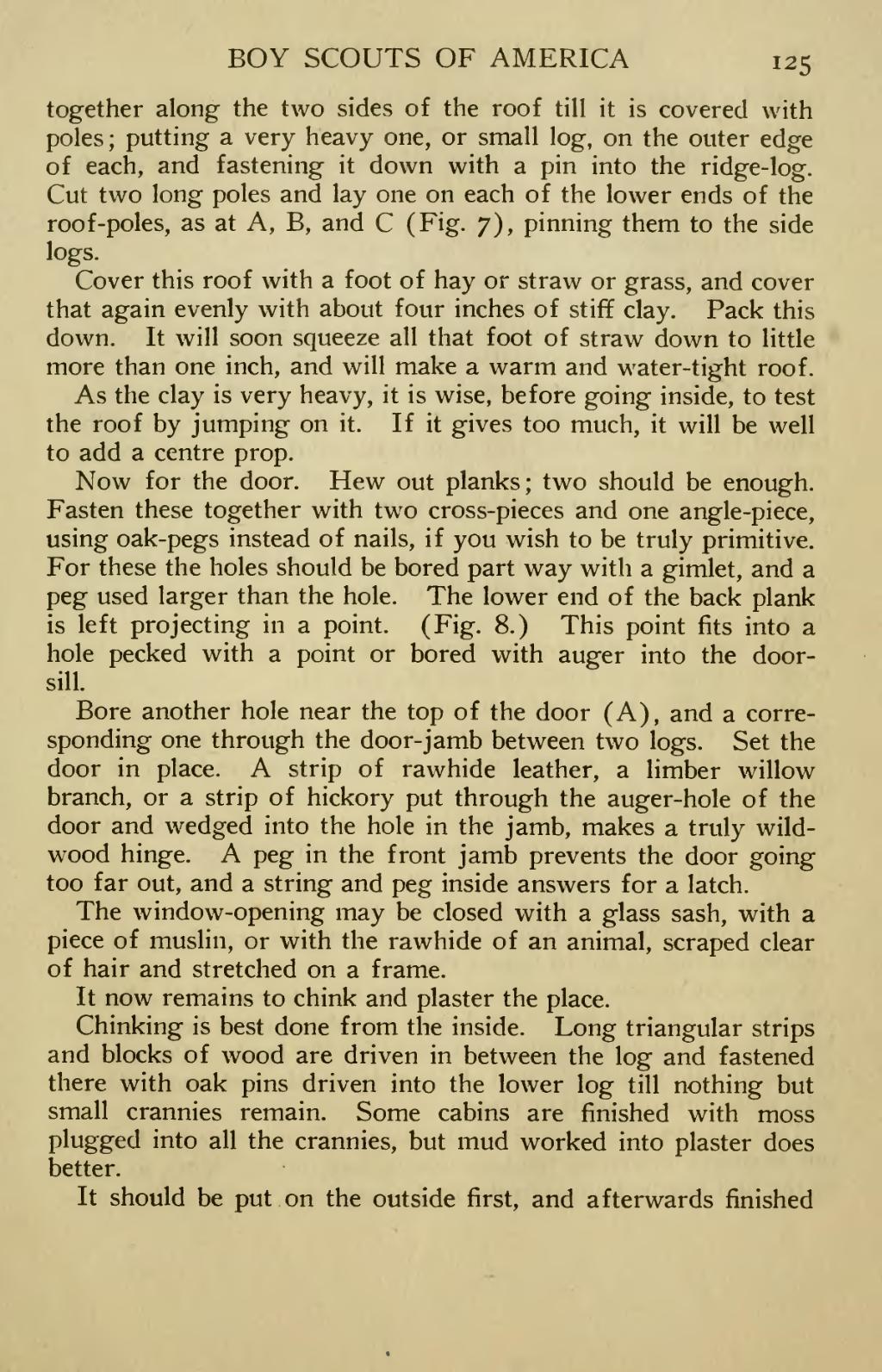BOY SCOUTS OF AMERICA 125 together along the two sides of the roof till it is covered with poles; putting a very heavy one, or small log, on the outer edge of each, and fastening it down with a pin into the ridge-log. Cut two long poles and lay one on each of the lower ends of the roof-poles, as at A, B, and C (Fig. 7), pinning them to the side logs. Cover this roof with a foot of hay or straw or grass, and cover that again evenly with about four inches of stiff clay. Pack this down. It will soon squeeze all that foot of straw down to little more than one inch, and will make a warm and water-tight roof. As the clay is very heavy, it is wise, before going inside, to test the roof by jumping on it. If it gives too much, it will be well to add a centre prop. Now for the door. Hew out planks; two should be enough. Fasten these together with two cross-pieces and one angle-piece, using oak-pegs instead of nails, if you wish to be truly primitive. For these the holes should be bored part way with a gimlet, and a peg used larger than the hole. The lower end of the back plank is left projecting in a point. (Fig. 8.) This point fits into a hole pecked with a point or bored with auger into the door- sill. Bore another hole near the top of the door (A), and a corre- sponding one through the door-jamb between two logs. Set the door in place. A strip of rawhide leather, a limber willow branch, or a strip of hickory put through the auger-hole of the door and wedged into the hole in the jamb, makes a truly wild- wood hinge. A peg in the front jamb prevents the door going too far out, and a string and peg inside answers for a latch. The window-opening may be closed with a glass sash, with a piece of muslin, or with the rawhide of an animal, scraped clear of hair and stretched on a frame. It now remains to chink and plaster the place. Chinking is best done from the inside. Long triangular strips and blocks of wood are driven in between the log and fastened there with oak pins driven into the lower log till nothing but small crannies remain. Some cabins are finished with moss plugged into all the crannies, but mud worked into plaster does better. It should be put on the outside first, and afterwards finished
Stránka:roll 1910.djvu/141
Z thewoodcraft.org
Tato stránka nebyla zkontrolována
